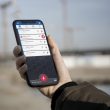Some key questions that potential bidders want answered in FirstNet’s RFP
Potential public-safety users want the RFP to ensure that their traffic will be given priority on the FirstNet system, even if it means preempting a secondary commercial customer. However, if these guidelines are not written correctly, prospective bidders could determine that the commercial opportunity is not great enough to submit a proposal.
Eventually, decisions also have to be made about how to prioritize public-safety traffic when so many first responders arrive at an incident that the capacity of a cell sector is saturated, but that is expected to be decided after the RFP process is completed.
How will the RFP ensure that the winning bidder legitimately pursues public-safety customers? One of the biggest fears expressed by public-safety representatives is that FirstNet could be structured in a manner in which the winning bidder would receive more benefit by NOT attracting public-safety customers, because that would allow the carrier to utilized the spectrum and network for commercial customers.
FirstNet board members are aware of this concern, and they have said that the RFP will be contained stipulations designed to encourage the winning bidder to earn public-safety customers, who are under no obligation to subscribe to the FirstNet system. These incentives—or penalties—will be reviewed closely by both potential bidders and prospective public-safety subscribers.
What are the minimum data speeds that will be guaranteed to public-safety users? FirstNet proposed such cell-edge metrics in its draft RFP, but it included the caveat that those figures could be altered in the final RFP. If those minimum speeds are increased dramatically, the winning bidder will need to deploy more LTE sites to meet the requirement, which will cost extra money.
FirstNet also needs to clarify the reference point to any data-speed minimums. Will there be any leeway given, especially if a big incident happens at the edge of a long-range “boomer” cell deployed to provide rural coverage? Does the requirement apply to each device? Or does it apply to each user, who could be wearing multiple devices/sensors/cameras? In an Internet of Things (IoT) world, this could make a big difference in the overall network investment that the winning bidder would have to make.
What are the coverage requirements? FirstNet included buildout timeline expectations and rural-coverage guidelines in the draft RFP, but it will be interesting to see if there will be any notable changes in the final document. Meanwhile, there is an obvious need for public safety to have in-building coverage, but it is debatable whether FirstNet should make it a requirement or wait for policymakers to address the issue in codes or legislation.
What are the network hardening/reliability/maintenance requirements? The FirstNet system is supposed to be a public-safety grade network that will operate during times when commercial networks typically are unavailable, but no one believes that every site will be able to withstand all disasters, have lots of backup power and have redundant backhaul paths that leverage different transport methods—for example, fiber and microwave. While these measures are not practical for all sites in the FirstNet system—that would be too expensive—such strategies are appropriate for key sites.
Meanwhile, when a part of the network goes down, how quickly does it have to be restored? The same question can be asked about how quickly deployable infrastructure can be activated in the event of an outage or a need to add network capacity at a particular site.










